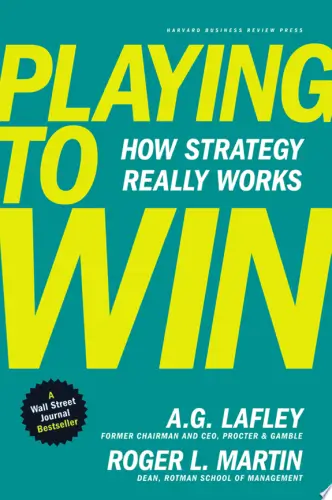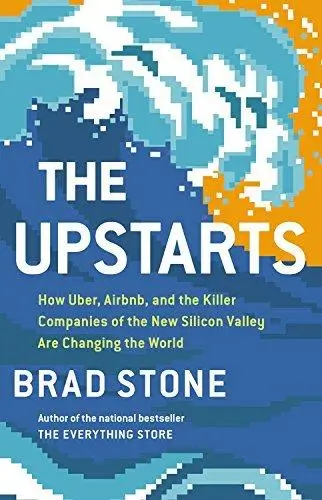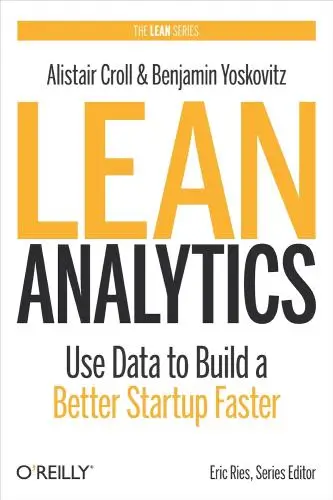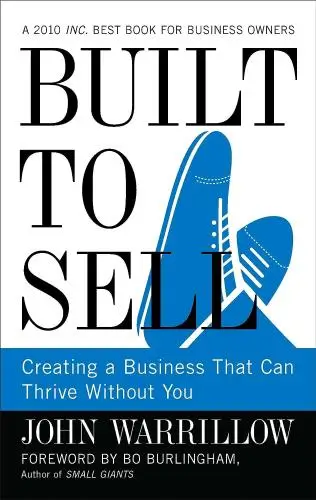Moneyball
The Art of Winning an Unfair Game
What's it about?
Moneyball by Michael Lewis delves into the world of baseball's Oakland Athletics and their revolutionary approach to assembling a competitive team. With a tight budget, General Manager Billy Beane leverages sabermetrics—a data-driven analysis—to identify undervalued players. This eye-opening narrative not only transformed baseball strategies but also became a metaphor for innovation and outsmarting competition in any field. A must-read for sports enthusiasts and business strategists alike.
About the Author
Michael Lewis is an American author celebrated for his keen insights into finance, economics, and sports. Notable works include "The Big Short," "Moneyball," and "Flash Boys," where he masterfully blends investigative journalism with storytelling. His writing often exposes systemic flaws and champions underdogs, showcasing his distinctive narrative skill and deep understanding of complex topics.
10 Key Ideas of Moneyball
Embracing Undervalued Metrics: The On-Base Percentage (OBP) Revolution
Instead of focusing on traditional metrics like batting averages, home runs, and RBIs, prioritize on-base percentage (OBP).
OBP measures a player's ability to reach base, highlighting those who may not hit many home runs but consistently get on base through walks or hits.
This approach values players overlooked by traditional scouting, offering a cost-effective strategy for team building.
By leveraging undervalued metrics, teams can assemble competitive rosters without overspending on high-profile players.
Learn DeeperAnalyze Your Metrics: Whether in sports, business, or personal goals, identify which metrics you currently prioritize. Are they the most effective in measuring success, or could there be undervalued metrics that offer a clearer picture?
Seek Out Undervalued Opportunities: Just like focusing on OBP in baseball, look for undervalued aspects in your field. This could mean investing in less popular stocks with strong fundamentals or hiring employees with unique, overlooked skills.
Implement a Data-Driven Approach: Start incorporating data analysis into your decision-making process. Use tools and software to gather data related to your goals, and analyze it to find patterns or opportunities that others might not see.
Educate Yourself Continuously: Stay informed about new metrics or methods in your area of interest. The world is constantly evolving, and staying updated can help you maintain an edge by utilizing the most current and effective strategies.
- Example
In a business setting, instead of just focusing on revenue, a company might start tracking customer satisfaction scores or employee engagement levels as indicators of long-term success.
- Example
For a personal fitness goal, rather than just measuring weight loss, one might track the consistency of workout sessions or the diversity of nutrition intake to get a more comprehensive view of health improvement.
Data-Driven Decision Making: Beyond the Scout's Eye
Shift from relying solely on scouts' subjective evaluations to incorporating data analytics into player assessments.
Scouts provide valuable insights, but their evaluations can be biased by personal perceptions.
Data analytics offers an objective analysis of a player's performance and potential, leading to more informed decisions.
By combining scouting insights with statistical analysis, teams can identify talent more accurately and efficiently.
Learn DeeperStart with the Data: Begin by collecting data relevant to your decisions. This could be performance metrics at work, financial records for budgeting, or even personal fitness tracking. The key is to gather objective information that can inform your choices.
Learn Basic Data Analysis: You don't need to become a statistician overnight, but understanding basic data analysis techniques can help you make sense of the numbers. Online courses and tutorials can be great resources for learning how to interpret data effectively.
Combine Data with Personal Insight: Just like in 'Moneyball', the goal isn't to replace your intuition with data, but to augment it. Use data to challenge or confirm your assumptions, and then apply your personal experience and insight to make the final decision.
Seek Diverse Perspectives: When evaluating data or making decisions, consult with others to get different viewpoints. This can help mitigate personal biases and lead to more balanced and informed decisions.
Iterate and Adapt: Decision-making is an ongoing process. Use the outcomes of your decisions as new data points to learn from. Be willing to adapt your strategies based on what the data tells you over time.
- Example
In a small business setting, instead of relying solely on gut feeling to decide which products to stock, use sales data and customer feedback to inform inventory decisions. This approach combines quantitative data with qualitative insights from customers.
- Example
For personal fitness goals, rather than sticking to a workout routine because it's popular, track your own progress through apps or wearable devices. Analyze this data to see what's actually working for your body, and adjust your exercise and diet plans accordingly.
The Economics of Wins: Cost per Win Analysis
Evaluate players based on the cost per win they bring to the team, rather than their market value or salary demands.
This approach seeks to maximize the number of wins per dollar spent by investing in players who contribute to wins at a lower cost.
It encourages teams to find undervalued players who perform well in critical areas that contribute to winning games, allowing for a more efficient allocation of resources.
Learn DeeperIdentify undervalued skills: Start by analyzing which skills or contributions are often overlooked but crucial for success in your field. This could involve deep diving into data or trends that are not mainstream yet.
Evaluate cost-effectiveness: Before making decisions, whether it's hiring for a team or investing in tools, calculate the cost per outcome. This means looking beyond the price tag to how much value or wins it will bring relative to its cost.
Leverage data for decision making: Use data analytics to uncover hidden value. This could mean developing or utilizing software that helps track performance metrics not typically considered by others in your industry.
Embrace unconventional wisdom: Be open to strategies or talents that might not be traditionally valued. This could lead to discovering untapped potential that can offer a competitive edge at a lower cost.
Continuously reassess and adapt: The market and what's considered valuable can change. Regularly review your strategies and the performance of your investments (whether in people or tools) to ensure they still offer the best cost per win.
- Example
In a business setting, instead of hiring the most experienced (and expensive) marketing professionals, a company might invest in younger talent with a knack for social media and digital marketing, which could provide a higher return on investment through innovative campaigns at a lower salary cost.
- Example
In sports, a basketball team might focus on acquiring players with high efficiency ratings rather than just scoring averages. A player who contributes to the team's success through assists, rebounds, and defense might have a lower salary but contribute more to wins than a high-scoring player demanding a max contract.
Exploiting Market Inefficiencies: Finding Value in Overlooked Areas
Identify and capitalize on market inefficiencies by targeting players undervalued by other teams.
This could be due to biases against certain player profiles, such as age, physical appearance, or non-traditional skill sets.
By recognizing where the market fails to accurately assess player value, teams can acquire impactful players at a lower cost, gaining a competitive edge.
Learn DeeperIdentify Your Market's Inefficiencies: Start by analyzing your industry or field to pinpoint where the market undervalues certain assets, skills, or roles. This requires thorough research and perhaps data analysis to spot trends that others might overlook.
Look Beyond Surface-Level Attributes: Challenge yourself to see past conventional metrics of value, such as prestigious degrees or traditional career paths. Instead, focus on the actual impact or potential contribution someone or something can bring to your team or project.
Develop a Metric for Undervalued Assets: Create your own set of criteria or metrics that help you assess value differently from your competitors. This could involve innovative performance indicators, potential for growth, or adaptability in changing circumstances.
Leverage Your Findings: Once you've identified undervalued assets, act decisively to integrate them into your strategy. This could mean hiring a candidate with an unconventional background but immense potential or investing in a technology that others have dismissed.
Continuously Reassess and Adapt: The market and its inefficiencies will evolve, so regularly review your approach and adjust as necessary. Stay informed about industry trends and be ready to pivot your strategy to stay ahead.
- Example
In the tech industry, a company might find that self-taught programmers are often overlooked due to the lack of formal education but possess exceptional coding skills and innovative problem-solving abilities. By focusing on practical assessments rather than degrees, the company can build a highly skilled team at a lower cost.
- Example
In the restaurant business, a savvy owner might notice that certain ethnic cuisines are undervalued in their city. By opening a restaurant that offers high-quality, authentic dishes from that cuisine, they can tap into an untapped market, attracting food enthusiasts looking for new experiences.
The Importance of Discipline at the Plate: Valuing Walks
Prioritize players with high walk rates, as this indicates discipline at the plate and contributes significantly to a team's on-base percentage.
Players who can draw walks not only get on base more often but also drive up pitchers' pitch counts, leading to more favorable hitting conditions and potentially forcing opposing managers to dip into their bullpen earlier.
This strategic patience can tilt the game's dynamics in favor of the disciplined team.
Learn DeeperWatch More Pitches: When at bat, make a conscious effort to watch more pitches. This not only increases your chances of drawing a walk but also helps you better understand the pitcher's strategy and tendencies.
Practice Plate Discipline: During practice sessions, focus on improving your ability to distinguish between balls and strikes. Use drills that emphasize patience and decision-making at the plate to enhance your discipline.
Analyze Pitchers: Before games, study the opposing pitchers. Understand their go-to pitches and typical pitch sequences. This knowledge can help you anticipate what might be coming, making it easier to decide when to swing and when to hold back.
Embrace the Full Count: Don't fear getting into a full count (3-2). While it's a high-pressure situation, it also means you've successfully worked the pitcher. Use this to your advantage, staying ready for a good pitch but also prepared to take your base on a ball.
- Example
In a game situation, a player might face a pitcher known for relying heavily on breaking balls. By anticipating this and deciding ahead of time to lay off pitches that start outside the strike zone, the player can increase their chances of drawing a walk.
- Example
During a team practice, a coach sets up a drill where hitters must take at least two pitches before swinging. This drill helps players practice watching pitches closely and making split-second decisions about whether to swing, fostering greater discipline at the plate.
Deeper knowledge. Personal growth. Unlocked.
Unlock this book's key ideas and 15M+ more. Learn with quick, impactful summaries.
Read Full SummarySign up and read for free!
Moneyball Summary: Common Questions
Moneyball focuses on the use of sabermetrics in baseball, particularly the story of how the Oakland Athletics revolutionized the game by using data analysis to build a competitive team on a limited budget.
Experience Personalized Book Summaries, Today!
Discover a new way to gain knowledge, and save time.
Sign up for our 7-day trial now.
No Credit Card Needed

Similar Books

$100M Offers
Alex Hormozi
Principles of Marketing, Global Edition
Gary Armstrong
The 100 Best Business Books of All Time
Jack Covert
Playing to Win
A.G. Lafley
Productize
Eisha Armstrong
Start Your Own Pet-Sitting Business and More
Entrepreneur Press
The 22 Immutable Laws of Marketing
Al Ries
The Upstarts
Brad Stone
Lean Analytics
Alistair Croll
Built to Sell
John WarrillowTrending Summaries

Peak
Anders Ericsson
Never Split the Difference
Chris Voss
Smart Brevity
Jim VandeHei
The Psychology of Money
Morgan Housel
The First 90 Days
Michael D. Watkins
Atomic Habits
James Clear
Thinking, Fast and Slow
Daniel Kahneman
The Body Keeps the Score
Bessel van der Kolk M.D.
The Power of Regret
Daniel H. Pink
The Compound Effect
Darren HardyNew Books

Job Interviews For Dummies®
Joyce Lain Kennedy
Job Interviews In A Week
Alison Straw
Handbook of Career Development
Gideon Arulmani
The Art of Spending Money
Morgan Housel
$100M Offers
Alex Hormozi
A Candle for Kiri
Edna Mae Holm
Principles of Marketing, Global Edition
Gary Armstrong
Serpent Rising: The Kundalini Compendium
Neven Paar
Feeling Is the Secret
Neville Goddard

